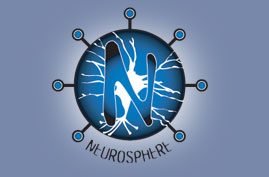Self Powering
Personal Infrastructure
Powering remains a big question in the migration of personal telecom devices closer to and then within the human body. Here’s an interesting approach.
“Devices implanted in the body require power, which is normally delivered by batteries, but a number of approaches have been proposed to tap into the power or fuel sources the body already provides. Wang and Song (p. 242) have converted mechanical energy into electrical energy by deflecting anchored ZnO nanowires with a conductive atomic force microscope tip. The strain field created by bending the nanowires with the tip caused charges to separate and build up on opposite sides of this polar material. The tip and nanowire form a rectifying Schottky barrier so that built-up charge is released as electrical current when the tip crosses from one face polarity to the other.”
http://www.sciencemag.org/content/vol312/issue5771/twis.dtl#312/5771/155b
